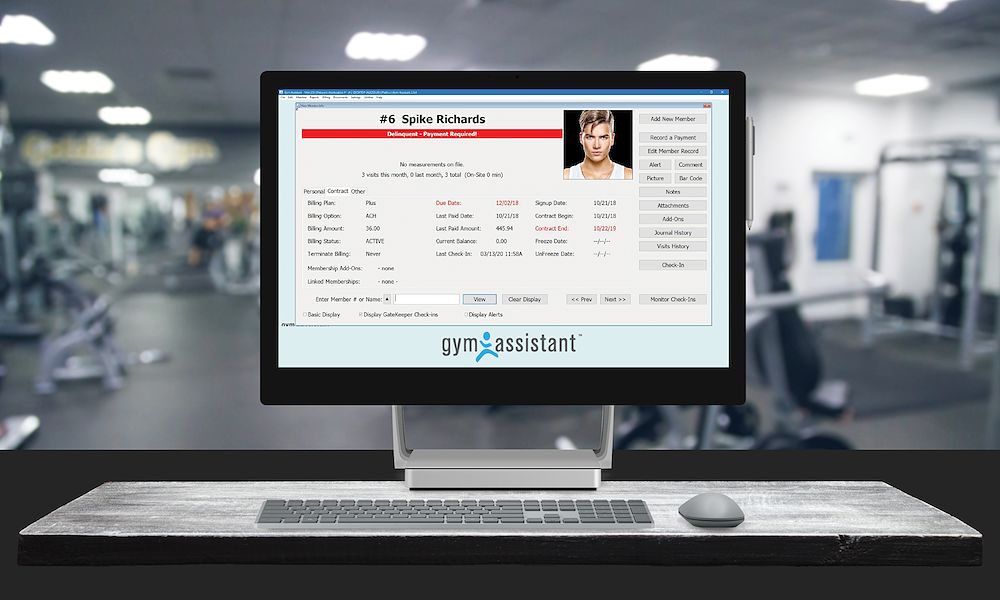How to Open a Gym in New Jersey: A Guide to Building a Successful Fitness Business
New Jersey, with its dense population and emphasis on healthy living, is an excellent location for opening a gym. From bustling urban areas like Newark and Jersey City to the scenic suburbs, the Garden State offers a wide variety of markets for fitness entrepreneurs. Whether you’re opening a boutique studio, a general fitness gym, or a specialized training center, success requires careful planning and strategic execution.
In this guide, we’ll explore the essential steps to open a gym in New Jersey, while also highlighting how gym management software like Gym Assistant can streamline your operations and enhance the member experience.
Step 1: Understand Your Market and Choose Your Niche
New Jersey’s fitness market is diverse, and understanding your local demographic is key to identifying the right niche for your gym. Fitness needs can vary greatly depending on your location:
- Urban Areas: Cities like Newark, Jersey City, and Paterson may demand boutique studios, personal training gyms, or group fitness centers.
- Suburban Areas: Communities in places like Princeton or Morristown may prefer family-oriented gyms with childcare services and a variety of equipment.
- Coastal Towns: Shoreline areas such as Asbury Park or Long Beach Island might thrive with gyms that focus on outdoor fitness or beach-body training.
Use surveys, focus groups, and competitor analysis to determine what type of gym will resonate with your target audience.
Step 2: Build a Unique Brand Identity
In New Jersey’s competitive fitness market, having a strong and unique brand is essential. Your brand should convey what makes your gym special and appeal to your target market. Consider these elements:
- Specialization: Do you focus on group classes, personal training, or functional fitness?
- Design and Atmosphere: Will your gym have a modern, industrial vibe or a warm, welcoming environment?
- Sustainability: Incorporate eco-friendly practices, such as energy-efficient equipment, to attract environmentally conscious members.
Your branding will influence everything from your marketing materials to your gym’s interior design.
Step 3: Create a Business Plan
A well-crafted business plan is your roadmap to success and a requirement for securing funding. Your business plan should include:
- Mission Statement: Outline the purpose and goals of your gym.
- Market Analysis: Research local demographics and competitors.
- Financial Plan: Include detailed cost estimates, revenue projections, and funding needs.
- Service Offerings: Define your gym’s services, from membership options to classes and training.
- Marketing Strategy: Detail how you’ll attract and retain members.
- Operational Plan: Describe staffing needs, operational hours, and policies.
Step 4: Secure Funding
Opening a gym requires significant investment, including real estate, equipment, and marketing. Funding options in New Jersey include:
- Small Business Loans: Look into local banks and credit unions for gym-specific loans.
- State Programs: Explore resources from the New Jersey Economic Development Authority (NJEDA).
- Private Investors: Pitch your business plan to investors passionate about fitness and wellness.
Step 5: Choose a Strategic Location
Location is one of the most critical factors for your gym’s success. In New Jersey, you’ll need to balance accessibility with affordability. Consider:
- Proximity to Your Target Audience: Are you near residential neighborhoods, office hubs, or shopping centers?
- Transportation and Parking: Ensure easy access by car, bus, or train, and provide ample parking if possible.
- Zoning Laws: Verify that your location complies with New Jersey zoning regulations for fitness facilities.
Step 6: Register Your Business and Obtain Licenses
Operating a gym in New Jersey requires compliance with state and local regulations. Key steps include:
- Business Registration: Register your gym with the New Jersey Division of Revenue and Enterprise Services.
- Permits and Licenses: Check with your local municipality for any additional permits required.
- Health and Safety Compliance: Ensure your facility meets state health and safety standards.
- Liability Insurance: Protect your gym from potential legal claims.
Step 7: Design Your Gym and Purchase Equipment
Your gym’s layout and equipment should align with your brand and member needs. For example:
- Boutique Studios: Focus on a clean, minimalist design with specialized equipment.
- General Fitness Gyms: Offer a mix of cardio machines, free weights, and resistance training equipment.
- Specialized Gyms: Invest in equipment specific to your niche, such as boxing rings, yoga props, or CrossFit rigs.
Ensure your gym is welcoming, functional, and easy to navigate.
Step 8: Build a Skilled Team
Your staff will shape the member experience and help build your gym’s reputation. Hire:
- Certified Trainers: Look for staff with credentials from NASM, ACE, or ISSA.
- Engaging Instructors: Choose instructors who can lead dynamic group classes.
- Customer-Focused Front Desk Staff: Friendly and professional staff members are essential for member retention.
Step 9: Use Gym Management Software to Streamline Operations
Managing a gym efficiently requires robust tools, and gym management software like Gym Assistant is essential. Here’s how it helps:
- Membership Management: Easily track sign-ups, renewals, and attendance.
- Automated Billing: Save time with seamless payment processing and reminders.
- Analytics and Insights: Monitor member trends, peak hours, and revenue to make informed decisions.
- Member Engagement: Send automated notifications about promotions, events, or updates.
With Gym Assistant, you can focus on growing your business while providing a top-tier experience for your members.
Step 10: Market Your Gym Effectively
Attracting members in a competitive market like New Jersey requires a strong marketing strategy. Some effective tactics include:
- Social Media Presence: Use platforms like Instagram and Facebook to showcase your gym’s vibe, share success stories, and promote special offers.
- Local Collaborations: Partner with nearby businesses, such as juice bars or health stores, for cross-promotions.
- Community Events: Host open houses, fitness challenges, or charity fundraisers to build relationships with your community.
- Referral Programs: Offer incentives to existing members for bringing in new clients.
Step 11: Focus on Long-Term Growth and Retention
Success doesn’t stop after your grand opening. To build a sustainable business:
- Continuously gather feedback from members and staff.
- Update equipment and class offerings to keep up with fitness trends.
- Use gym management software to track retention and engagement rates.
Conclusion
Opening a gym in New Jersey is an exciting opportunity to blend your passion for fitness with a thriving business. By understanding your market, building a unique brand, and leveraging tools like good gym software, you can create a gym that stands out and meets the needs of your community.
With careful planning and a commitment to excellence, your gym will become a hub for health and wellness in the Garden State.
At Gym Assistant we specialise in membership management software that is really easy to use – visit https://www.gymassistant.com/ for more!



